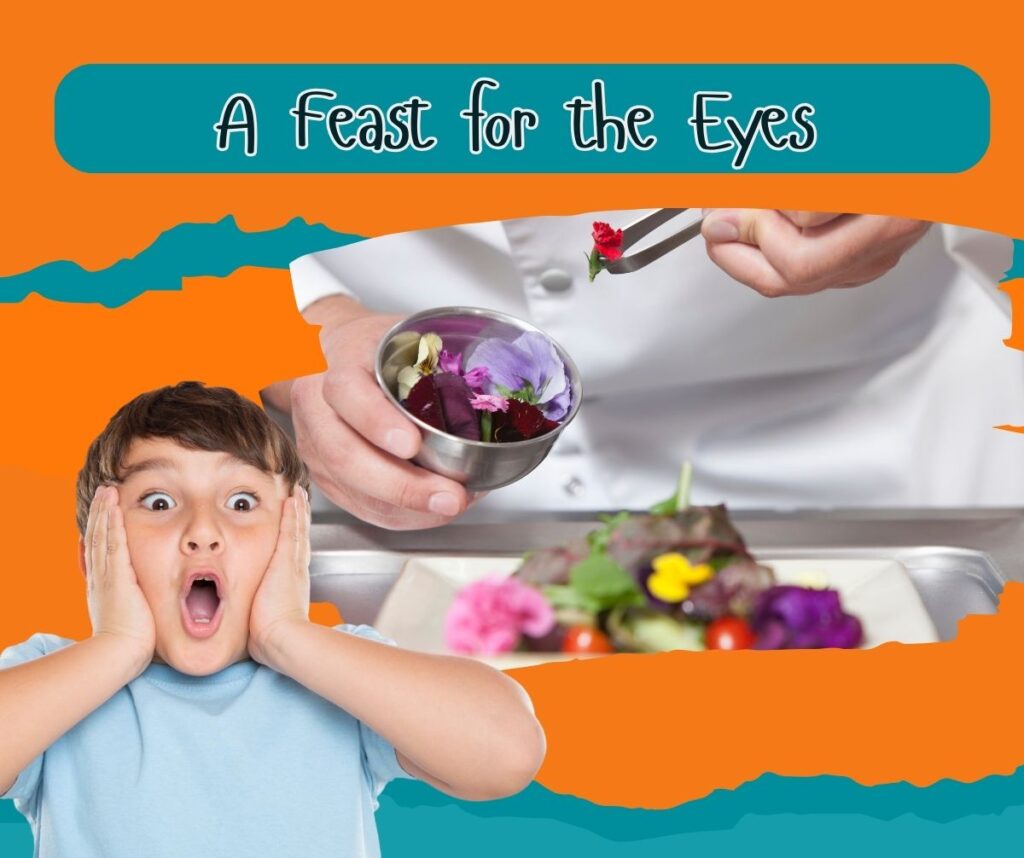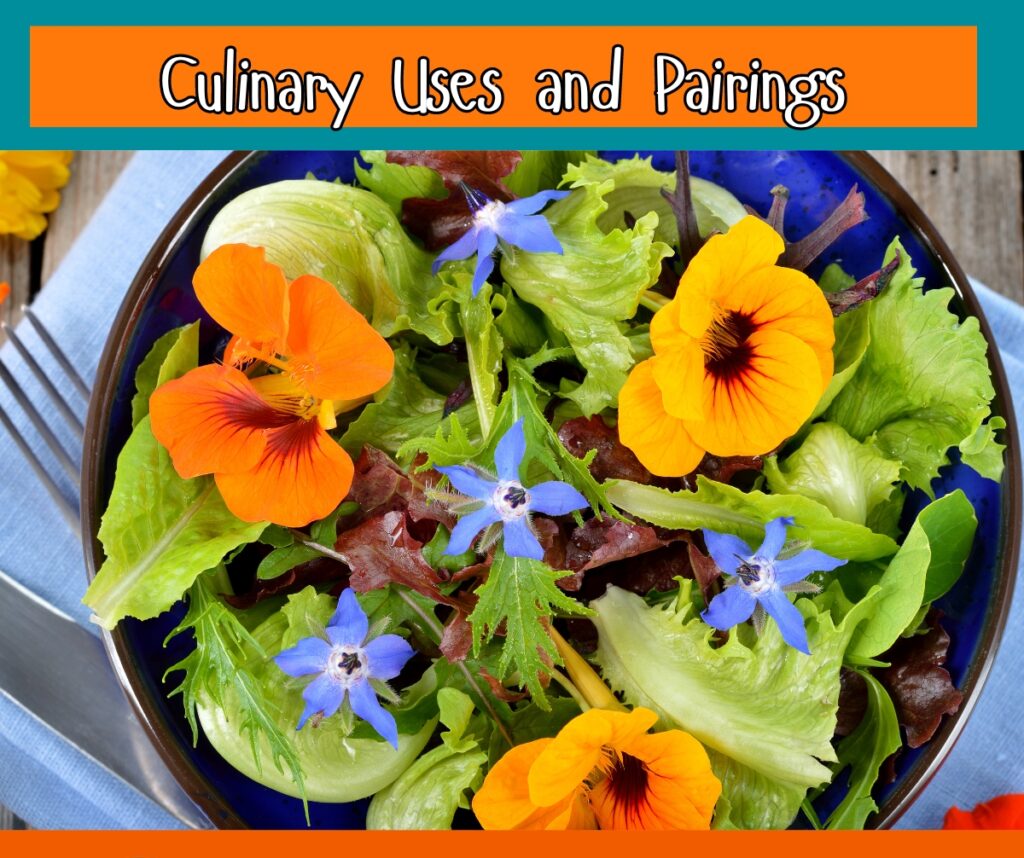
Have you ever wondered what it’s like to taste a flower? Not just any flower, but one that’s both a feast for the eyes and a delight for the palate?

Edible flowers have been part of culinary traditions worldwide for centuries. From the zesty Nasturtiums to the subtly sweet Violets, each flower brings its unique flavour and aesthetic appeal to the table. But why are they gaining such popularity now? It’s simple: they add a touch of elegance and excitement to any dish.
Safety First: Edible vs. Non-Edible Flowers
Before we dive into the flavours and uses, it’s crucial to distinguish between edible and non-edible flowers. Not all flowers are safe to eat, and some can be toxic.
Therefore, it’s essential to source your edible flowers from trusted suppliers or grow them yourself, ensuring they are free from harmful pesticides.
Edible flowers offer a variety of flavours, beyond just their appearance. Nasturtiums provide a peppery taste, Marigolds have citrusy notes, and Roses have a delicate sweetness.
These flowers each have their own distinct flavour profiles, making them suitable for use in both savoury and sweet dishes.
How do you use edible flowers in cooking? The possibilities are endless. They can be used as garnishes, infused into drinks, mixed into salads, or even incorporated into desserts.
For instance, Lavender is perfect for adding a floral touch to cakes, while Borage, with its cucumber-like flavour, is excellent in cocktails.

Health Benefits: More Than Just a Pretty Face
Edible flowers are not only visually appealing but also packed with nutrients. Many contain vitamins, antioxidants, and other beneficial compounds that can contribute to a healthy diet.
Interested in growing your edible flower garden? Start with easy-to-grow varieties like Calendula or Pansies.
Ensure they are grown in well-drained soil and have adequate sunlight. Remember, the key to successful cultivation is understanding the specific needs of each flower variety.
Edible flowers are more than a culinary fad; they’re a blossoming trend in modern gastronomy. Chefs and home cooks alike are embracing these natural beauties for their ability to transform a simple dish into a work of art.
The world of edible flowers is a delightful fusion of taste, nutrition, and aesthetics. Whether you’re a seasoned chef or a curious foodie, exploring this colourful domain is a journey worth taking.
So, why not add a splash of floral beauty to your next meal and experience the magic yourself?